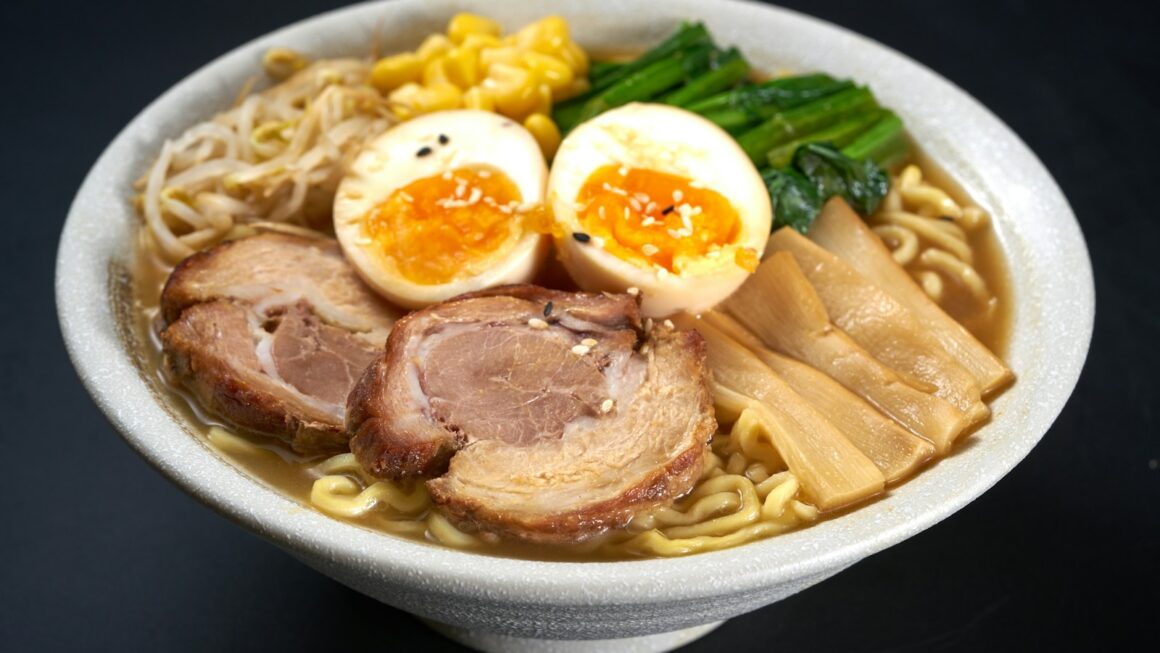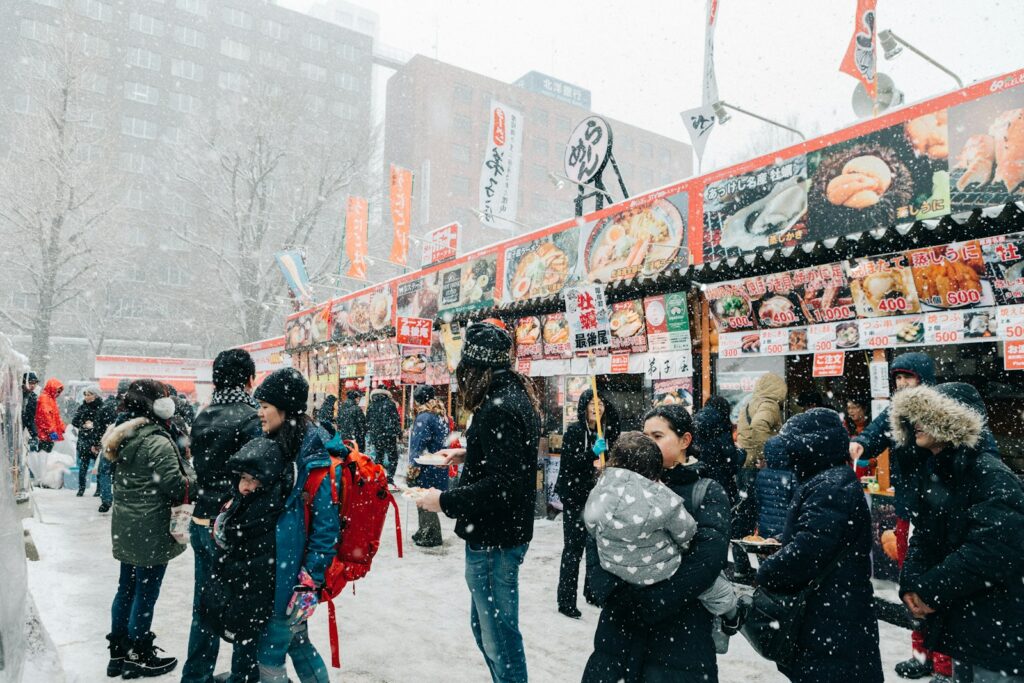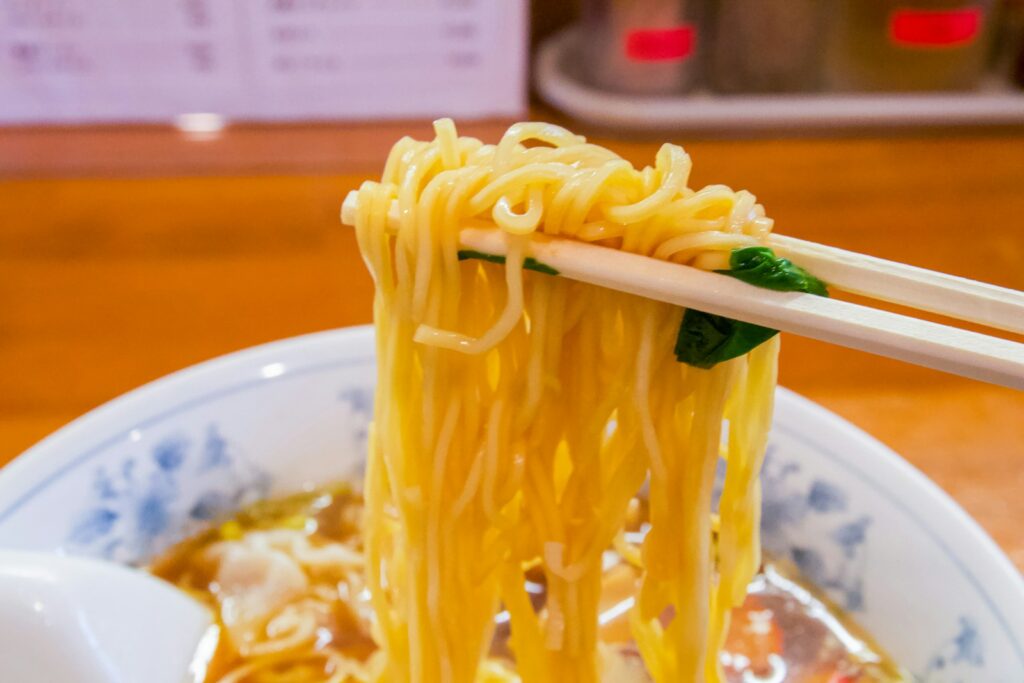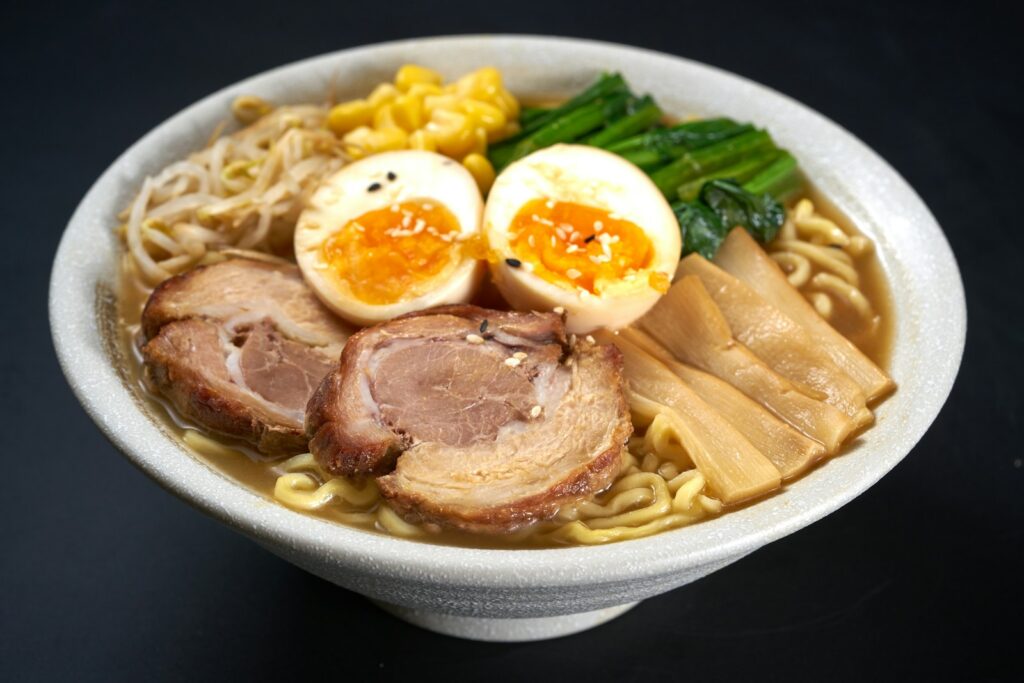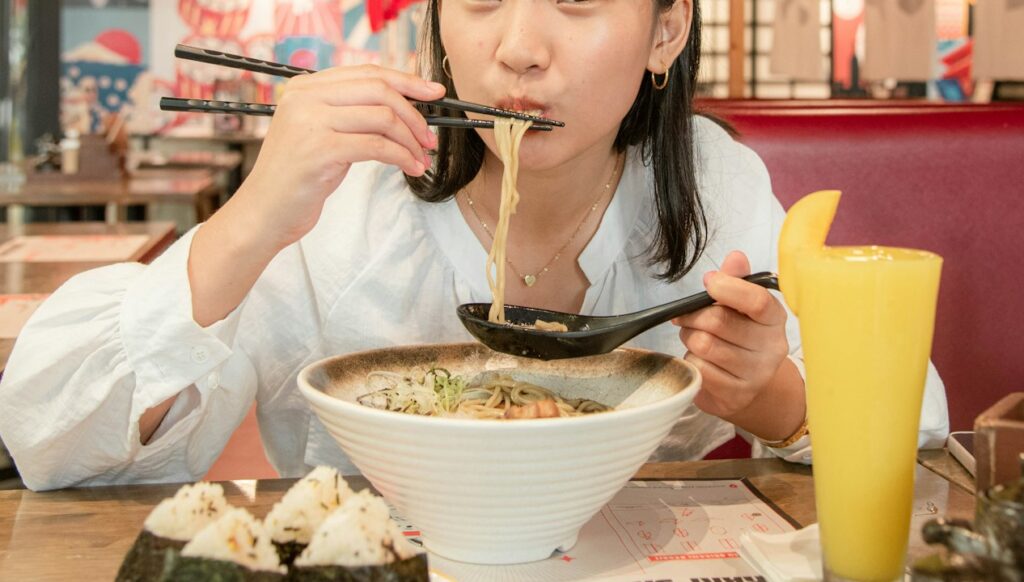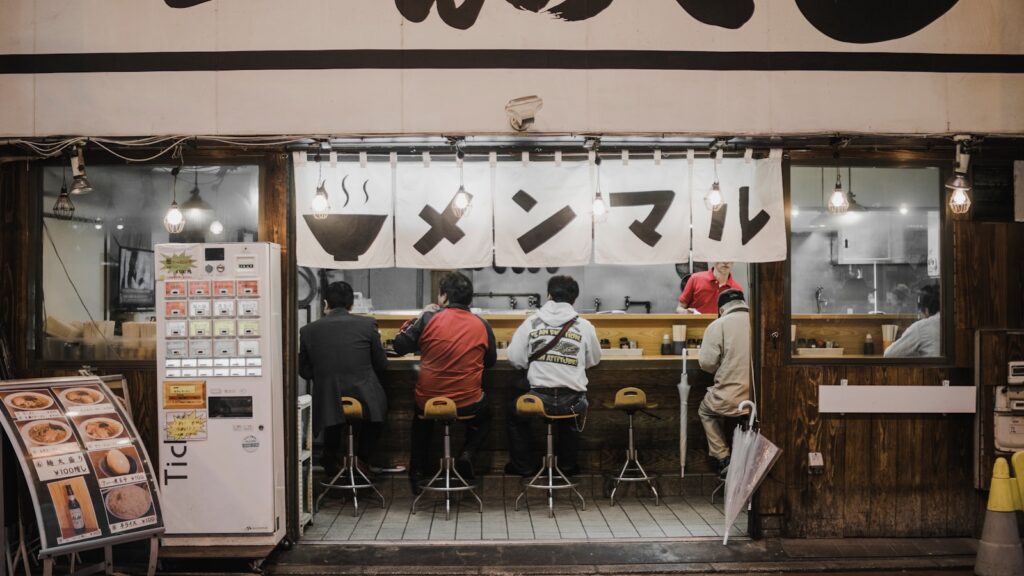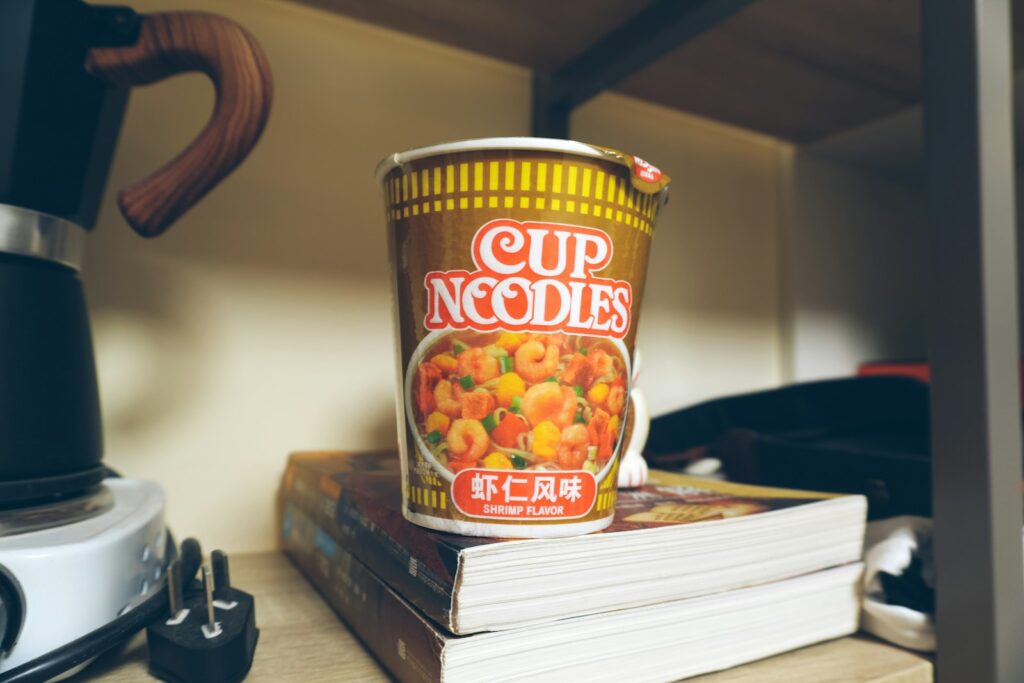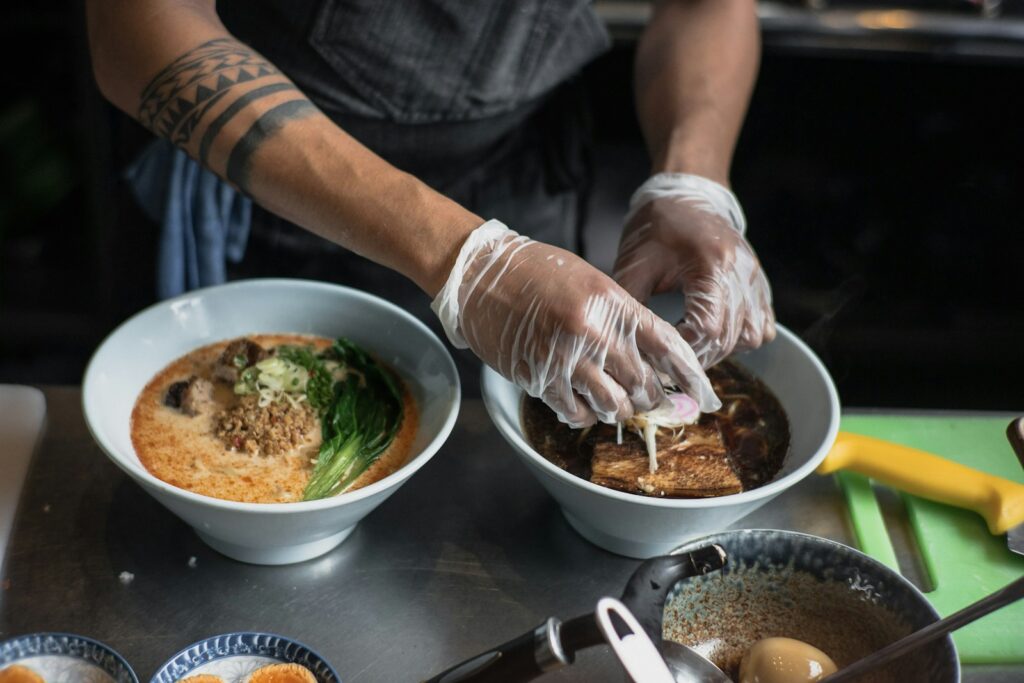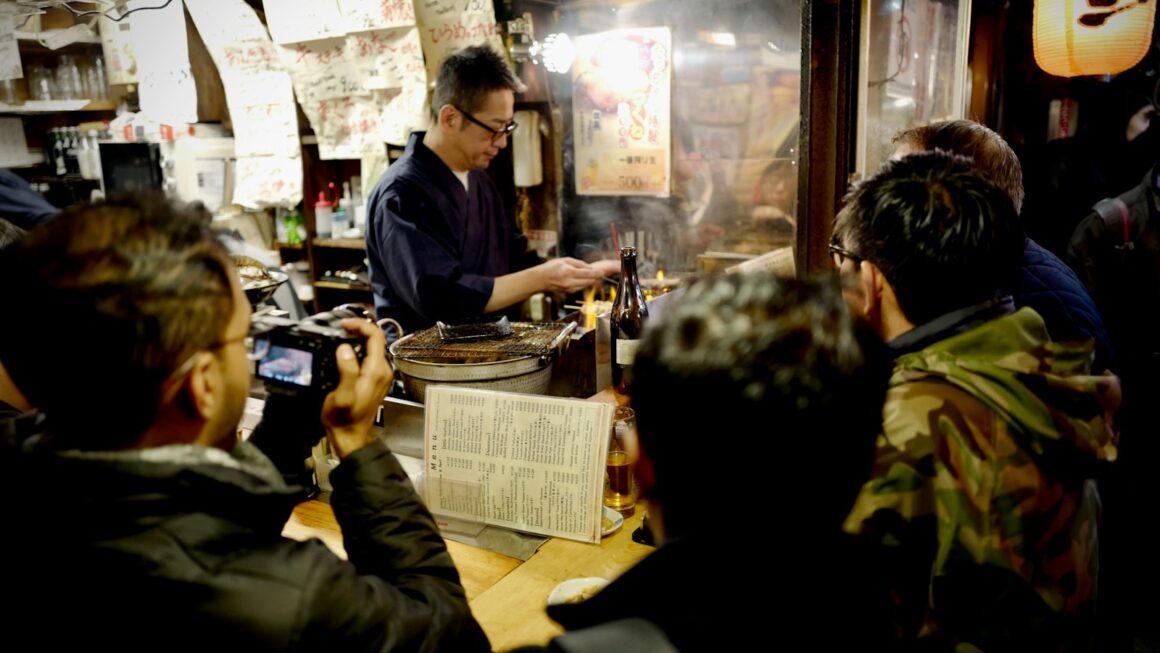Hey there, fellow ramen enthusiast! Living in Japan has opened my eyes (and taste buds) to the incredible world of ramen. This iconic Japanese dish has way more to offer than you might think. Buckle up as we dive into 10 essential things you must know about ramen – because trust me, your noodle game is about to get a serious upgrade.
1. The Origins of Ramen: From China to Japan’s Heart
Did you know that ramen wasn’t originally from Japan? Yup, this mouth-watering dish started in China but found its true calling here in Japan. It was initially known as “Chinese soba” and has since evolved into a unique Japanese culinary delight. Ramen made its way to Japan in the late 19th or early 20th century, brought over by Chinese immigrants. At first, it was sold as a street food in bustling cities like Yokohama, and over time, it became embedded in Japanese cuisine.
The real explosion in ramen’s popularity came after World War II, when food shortages made wheat-based noodles an accessible and affordable option for many Japanese people. From these humble beginnings, ramen has grown into a culinary icon, with each region in Japan developing its own unique style. Exploring these regional variations is like embarking on a deliciously fun treasure hunt, each bowl offering a new and exciting experience.
2. Types of Ramen Broth: The Soul of Your Bowl
Alright, let’s talk about the heart and soul of ramen – the broth. The broth is where all the magic happens, and there are four main types, each with its own distinct personality:
- Shoyu (Soy Sauce): Think of it as the classic little black dress of ramen broths – clear, brown, and perfectly salty. Shoyu broth is made by combining soy sauce with chicken, vegetable, or fish stock, giving it a tangy, savory flavor. It’s versatile and pairs well with a wide variety of toppings. In Tokyo, shoyu ramen is particularly popular, and many shops add their own special touches, like incorporating seafood elements for added depth.
- Miso: This one’s like a warm hug in a bowl, thanks to the rich, hearty flavor of fermented soybean paste. Miso broth is relatively new compared to other ramen broths, having been popularized in Hokkaido in the mid-20th century. The broth is thick, nutty, and full-bodied, often combined with chicken or pork stock to create a deeply satisfying experience. It’s perfect for cold winter days when you need something to warm your soul.
- Shio (Salt): Light, clear, and refreshingly simple. Perfect for when you want to keep things uncomplicated. Shio broth is the oldest type of ramen broth and is typically made with a base of chicken or fish stock, seasoned with salt. It’s often lighter and more subtle than other broths, allowing the flavors of the other ingredients to shine through. It’s a great option if you’re looking for something a bit more delicate.
- Tonkotsu (Pork Bone): The rockstar of broths – thick, creamy, and packed with porky goodness from hours of boiling pork bones. Tonkotsu broth originated in Fukuoka, Kyushu, and is known for its rich, milky texture and intense umami flavor. The process of making tonkotsu broth is labor-intensive, involving boiling pork bones, fat, and collagen for hours, sometimes even days, until the broth becomes creamy and opaque. It’s a hearty, stick-to-your-ribs kind of broth that’s incredibly satisfying.
3. Regional Ramen Variations: A Flavor Tour Across Japan
Japan is like a ramen wonderland, and each region has its own spin on this beloved dish. Exploring these regional variations is like a culinary adventure, with each bowl offering a new and exciting experience. Here are a few must-tries:
- Sapporo Ramen: From the chilly lands of Hokkaido, featuring miso broth and buttery corn. It’s like a warm blanket for your taste buds. Sapporo ramen is often topped with ingredients that reflect Hokkaido’s agricultural bounty, such as sweet corn, butter, and locally sourced seafood. The miso broth is typically rich and hearty, perfect for combating the cold Hokkaido winters.
- Hakata Ramen: Hailing from Fukuoka, known for its milky tonkotsu broth and thin, straight noodles. It’s ramen royalty! Hakata ramen is famous for its rich, creamy broth and the unique cooking method used for the noodles. The noodles are thin and straight, cooked to a firm texture, and served in a broth that’s simmered for hours to extract maximum flavor from the pork bones. It’s often topped with thinly sliced pork belly, green onions, and pickled ginger.
- Tokyo Ramen: Shoyu broth with medium-thick, curly noodles. Simple, classic, and oh-so satisfying. Tokyo ramen often features a chicken or seafood-based shoyu broth, giving it a light yet savory flavor. The medium-thick, curly noodles are perfect for holding onto the broth, ensuring you get a mouthful of flavor with every bite. Common toppings include sliced pork, bamboo shoots, nori, and green onions.
- Kitakata Ramen: From the city of Kitakata in Fukushima Prefecture, this ramen is known for its light shoyu broth and thick, flat noodles. The broth is typically made with a combination of pork and niboshi (dried sardines), giving it a slightly fishy flavor that’s balanced by the richness of the pork. It’s often topped with generous slices of chashu, green onions, and menma.
- Hiroshima Tsukemen: This is a bit of a twist on traditional ramen, featuring cold noodles that are dipped into a separate bowl of spicy, flavorful broth. It’s a refreshing and spicy alternative to hot ramen, perfect for warm weather.
4. The Noodles: The Heartbeat of Ramen
Not all noodles are created equal, and ramen noodles come in all shapes and sizes. Whether they’re thin and straight or thick and curly, the noodles play a crucial role in the ramen experience. The type of noodle is carefully chosen to complement the broth, making every slurp a harmonious blend of texture and flavor.
Ramen noodles are typically made from wheat flour, salt, water, and kansui (alkaline mineral water). Kansui is the secret ingredient that gives ramen noodles their unique texture and yellowish color. The amount of kansui used, as well as the kneading and resting process, can affect the noodle’s texture, making it firm, chewy, or springy.
Here’s a closer look at some of the noodle variations you might encounter:
- Thin, Straight Noodles: Often used in tonkotsu ramen, these noodles are firm and cook quickly. They’re perfect for absorbing the rich, creamy broth without getting too soft.
- Thick, Curly Noodles: Commonly found in miso and shoyu ramen, these noodles have a chewy texture that holds up well in hearty broths. The curls help to catch and hold the broth, ensuring you get a burst of flavor with every bite.
- Flat, Wide Noodles: These noodles are less common but can be found in certain regional varieties, like Kitakata ramen. They have a unique texture that’s both soft and chewy, providing a satisfying contrast to the broth.
No matter the shape or size, the noodles in a bowl of ramen are always carefully crafted to complement the other ingredients, creating a balanced and harmonious dish.
5. Toppings Galore: Customize Your Bowl
Ramen toppings are where you can get creative and customize your bowl. The toppings not only add flavor and texture but also showcase the diversity and creativity of Japanese cuisine. Here are some of the stars:
- Chashu (Braised Pork Belly): Tender, melt-in-your-mouth slices of pork that make your ramen rich and meaty. Chashu is typically marinated in a mixture of soy sauce, sake, and sugar, then slowly braised until it’s incredibly tender and flavorful. It’s the ultimate comfort food topping.
- Menma (Bamboo Shoots): These fermented bamboo shoots add a satisfying crunch. Menma is usually seasoned with soy sauce and mirin, giving it a slightly sweet and savory flavor. It’s a great way to add some texture to your bowl.
- Nori (Seaweed): A little sheet of umami magic. Nori adds a subtle oceanic flavor that pairs perfectly with the broth. It’s often used as a garnish, placed on top of the ramen just before serving.
- Negi (Green Onions): Fresh, chopped green onions for a bit of bite and brightness. Negi adds a touch of freshness and a slight sharpness that cuts through the richness of the broth. It’s a simple but essential topping.
- Tamago (Soft-Boiled Egg): Marinated eggs with slightly runny yolks – because who doesn’t love a good ramen egg? Tamago is typically marinated in a mixture of soy sauce, mirin, and sake, infusing it with a deep, savory flavor. The yolk remains slightly runny, adding a creamy richness to the ramen.
- Narutomaki (Fish Cake): Those cute little pink and white spirals you see in your ramen? That’s narutomaki, a type of fish cake. It’s mildly fishy and adds a fun, decorative touch to your bowl.
- Corn and Butter: Popular in Hokkaido’s miso ramen, corn adds sweetness while a pat of butter melts into the hot broth, adding richness and depth of flavor.
- Bean Sprouts: These crunchy sprouts add a fresh, crisp texture to balance out the rich broth and tender noodles.
- Spicy Toppings: Many ramen shops offer spicy toppings like chili oil, spicy miso, or sliced jalapeños for those who like a bit of heat.
These toppings are just the beginning. Ramen is an endlessly customizable dish, and part of the fun is experimenting with different combinations to find your perfect bowl.
6. The Art of Slurping: Embrace the Sound
In Japan, slurping your ramen isn’t just acceptable – it’s encouraged! Slurping helps cool down the noodles and enhances the flavors. The act of slurping aerates the broth, releasing more aromas and making the overall experience more enjoyable. Plus, it’s a sign that you’re loving your meal, and you’ll fit right in with the locals.
If you’re new to slurping, it might feel a bit awkward at first, but don’t worry – it’s all part of the ramen experience. Start by lifting a small amount of noodles with your chopsticks, then lean in and slurp them up with gusto. Don’t be shy! The louder the slurp, the better.
Beyond the sensory benefits, slurping is also practical. Ramen is best enjoyed hot, and slurping helps to cool the noodles and broth slightly, so you don’t burn your mouth. It also helps you eat more quickly, which is important in a busy ramen-ya where others might be waiting for a seat.
So go ahead, embrace the slurp, and enjoy your ramen like a pro.
7. Ramen Culture and Etiquette: Know Before You Go
Ramen-ya (ramen shops) are everywhere in Japan, each with its own vibe and set of rules. Understanding the culture and etiquette of these shops can enhance your ramen experience and help you navigate like a local. Here are some tips to keep in mind:
- Order and Pay First: Many ramen shops use vending machines for ordering and paying. This system is efficient and ensures a quick turnaround, especially during busy times. To use the vending machine, insert your money, select your ramen and any extra toppings, then hand the ticket to the staff. Simple and efficient!
- Eat Quickly: Ramen is best enjoyed hot and fresh, so dive in and savor every bite. Ramen shops are often small and busy, with limited seating, so it’s customary to eat relatively quickly and make room for the next customer. This doesn’t mean you have to rush, but try to be mindful of others who might be waiting.
- Don’t Leave Broth: While it’s polite to finish your noodles and toppings, don’t stress about drinking all the broth – unless you want to, of course! The broth is often rich and salty, so it’s perfectly fine to leave some behind. However, if you do finish the broth, it’s a sign that you thoroughly enjoyed your meal.
- Mind Your Manners: While ramen shops are generally casual, it’s still important to be polite. Avoid talking loudly or using your phone at the table, and always say “gochisousama deshita” (thank you for the meal) when you leave.
- Customize with Caution: Many ramen shops offer a variety of condiments like garlic, sesame seeds, and chili oil. Feel free to customize your bowl to your liking, but start with small amounts – the flavors are already carefully balanced, and a little goes a long way.
8. Instant Ramen: The Global Phenomenon
Let’s not forget instant ramen, the savior of late-night cravings and broke college students everywhere. Invented by Momofuku Ando in 1958, instant ramen has become a global sensation with countless flavors and styles. It’s quick, it’s cheap, and it’s oh-so-satisfying.
Instant ramen was born out of necessity in post-war Japan when food shortages were rampant, and the need for a cheap, convenient food source was high. Ando’s invention revolutionized the way people ate, offering a tasty and affordable meal that could be prepared in minutes.
Today, instant ramen comes in a dizzying array of flavors and styles, from the classic chicken and beef to more exotic offerings like curry, kimchi, and seafood. You can find instant ramen in nearly every grocery store around the world, making it a beloved pantry staple.
But instant ramen isn’t just a quick meal – it’s also a canvas for culinary creativity. Many people love to jazz up their instant ramen with extra toppings like eggs, vegetables, meats, and even cheese. The possibilities are endless, and part of the fun is experimenting with different combinations to create your perfect bowl.
So next time you’re in need of a quick and tasty meal, don’t overlook the humble packet of instant ramen. It’s a global phenomenon for a reason!
9. Ramen Festivals and Competitions: Noodle Nirvana
Japan hosts some epic ramen festivals and competitions where the best of the best showcase their skills. It’s a noodle lover’s dream come true. If you’re lucky enough to attend one, you’ll get to taste a variety of ramen styles all in one place. It’s like hitting the ramen jackpot!
Ramen festivals are held throughout Japan, often featuring dozens of vendors from across the country. These events are a great way to sample different regional styles and discover new favorites. Some of the most famous ramen festivals include the Tokyo Ramen Show, the Osaka Ramen Expo, and the Sapporo Ramen Festival.
In addition to festivals, there are also ramen competitions where chefs compete to create the best bowl of ramen. These competitions are intense, with chefs pulling out all the stops to impress the judges. The winning bowls often become instant legends, drawing ramen fans from near and far to taste them.
If you’re a ramen enthusiast, attending one of these festivals or competitions should be on your bucket list. It’s a chance to immerse yourself in ramen culture, meet fellow noodle lovers, and, of course, eat a lot of amazing ramen.
10. Making Ramen at Home: Your Culinary Adventure
Sure, visiting a ramen-ya is an experience, but making ramen at home can be just as fun. Start with a simple broth, pick your favorite noodles and toppings, and voilà – you’ve got a personalized bowl of ramen. It’s a great way to experiment and discover your own ramen style.
Making ramen at home might seem daunting, but with a little practice, you can create a delicious bowl that rivals your favorite ramen shop. Here’s a basic guide to get you started:
Broth
The broth is the foundation of your ramen, and there are plenty of recipes available to suit your taste. For a simple shoyu broth, you’ll need:
- 4 cups chicken or vegetable stock
- 1 cup water
- 1/2 cup soy sauce
- 1/4 cup mirin
- 1 tablespoon sake (optional)
- 2 cloves garlic, minced
- 1-inch piece of ginger, sliced
Combine all the ingredients in a pot and simmer for 20-30 minutes to let the flavors meld together. Adjust the seasoning to taste, adding more soy sauce or mirin if needed.
Noodles
You can find fresh or dried ramen noodles at most Asian grocery stores. Cook the noodles according to the package instructions, then drain and set aside.
Toppings
Here’s where you can get creative! Some popular toppings include:
- Chashu (Braised Pork Belly): You can make your own chashu by marinating pork belly in soy sauce, sake, and sugar, then slowly braising it until tender. Alternatively, you can use store-bought char siu or any other type of meat you prefer.
- Soft-Boiled Eggs: Cook eggs in boiling water for 6-7 minutes, then transfer to an ice bath to stop the cooking. Peel and marinate in soy sauce and mirin for a few hours or overnight.
- Vegetables: Add blanched spinach, bean sprouts, corn, or bamboo shoots for some extra color and crunch.
- Nori: Tear a sheet of nori into pieces and place on top of your ramen for a burst of umami.
- Green Onions: Finely chop some green onions and sprinkle them over your ramen for a fresh, vibrant finish.
Putting It All Together
To assemble your ramen, divide the cooked noodles into bowls, pour the hot broth over the noodles, and arrange your toppings on top. Serve immediately and enjoy your homemade ramen masterpiece.
Making ramen at home is a fun and rewarding culinary adventure. It allows you to experiment with different flavors and ingredients, and there’s nothing quite like the satisfaction of slurping up a bowl of ramen you made from scratch.
Savoring Japanese Rament
Ramen isn’t just food – it’s an experience, a tradition, and a whole lot of fun. Each bowl of ramen tells a story, from the origins of its ingredients to the regional variations that reflect the diverse culinary landscape of Japan. Whether you’re enjoying a steaming bowl in a bustling ramen-ya or savoring the rich flavors of a homemade creation, ramen offers a unique and satisfying journey for your taste buds.
Exploring the different types of ramen broths, from the rich and creamy tonkotsu to the savory shoyu, and discovering the various toppings like chashu, nori, and soft-boiled eggs, can be an adventure in itself. Embracing the cultural etiquette, such as slurping your noodles and quickly enjoying your meal in a ramen shop, adds an authentic touch to the experience. And let’s not forget the joy of instant ramen, a global phenomenon that has made this dish accessible to everyone, anywhere, anytime.
Whether you’re a seasoned ramen aficionado or a curious newbie, there’s always something new to learn and taste in the world of ramen. So go ahead, dive into the rich, flavorful world of ramen, and let each bowl take you on a culinary journey through Japan.
For more delicious content and travel and living tips about Japan, make sure to subscribe to our blog and keep exploring the diverse and delightful world of Japanese cuisine.
